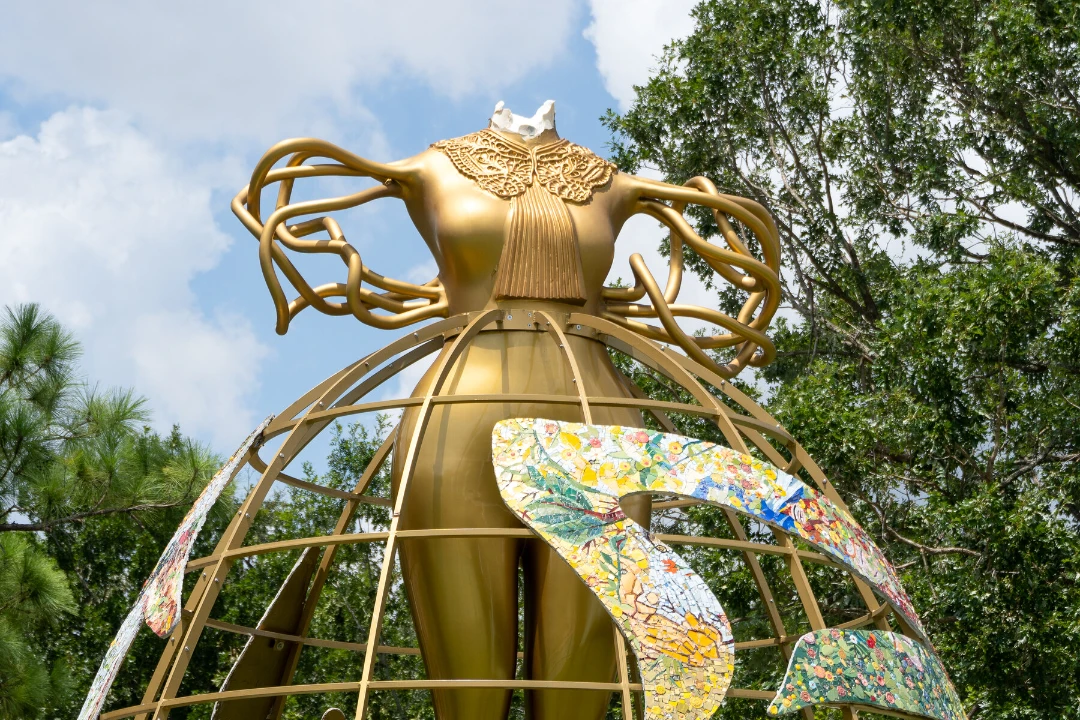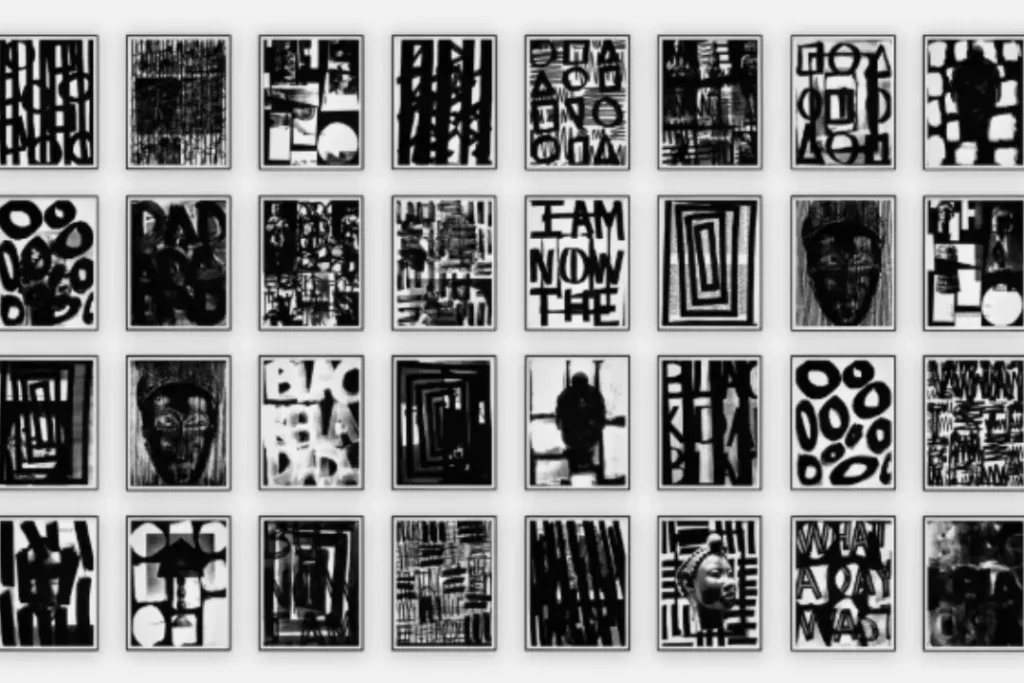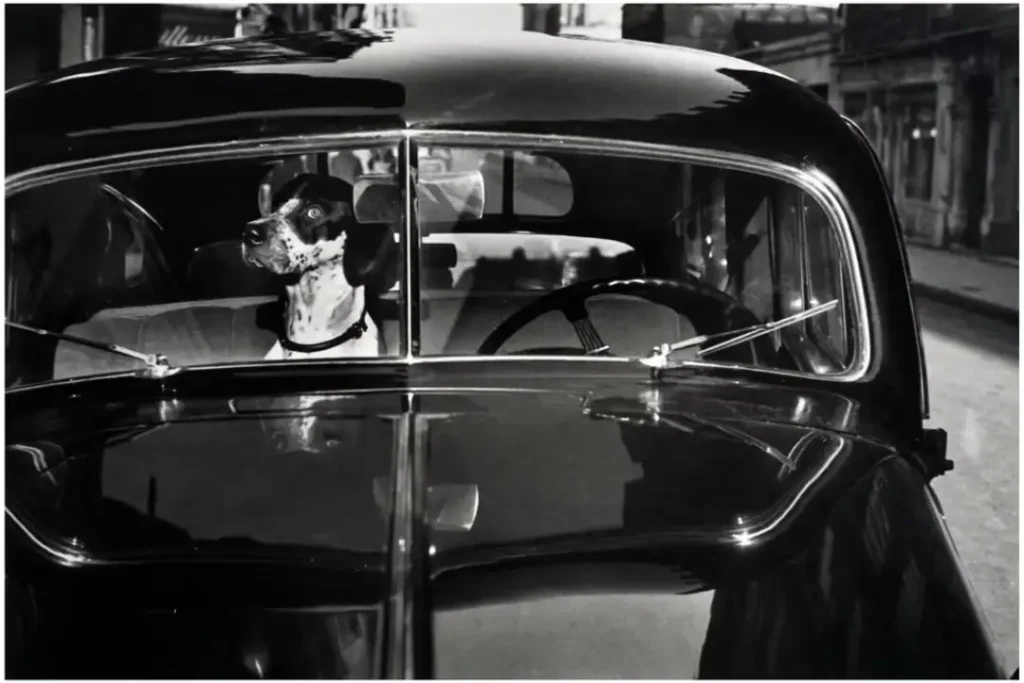A Shahzia Sikander statue at the University of Houston was vandalized following protests by right-wing groups. The 18-foot-tall bronze monument, celebrating women and justice, was beheaded early on July 8 amid harsh weather and power outages caused by Hurricane Beryl.
Investigation Launched Following Vandalism at University of Houston
Campus police obtained footage of the vandalism, as reported by the New York Times. Kevin Quinn, the university’s executive director of media relations, stated, “We were disappointed to learn the statue was damaged early Monday morning as Hurricane Beryl was hitting Houston. The damage is believed to be intentional. The University of Houston Police Department is currently investigating the matter.”
Shahzia Sikander’s Controversial Statue and Public Backlash
The female figure, adorned with braided hair forming horns and a lacy collar reminiscent of Ruth Bader Ginsburg’s, had previously been displayed to critical acclaim at Madison Square Park in New York City. However, its move to Houston drew criticism from the anti-abortion group Texas Right to Life, leading to campus-wide protests and the cancellation of planned events and an accompanying video work by Sikander.
Sikander Responds to Vandalism and Clarifies Artistic Intent
Sikander emphasized that her work does not contain Satanism, and clarifies that the ram’s horns are symbols of strength and wisdom. She described the vandalism as “a very violent act of hate” and urged the University of Houston to release the security footage to prove it was intentional.
Future Plans for the Damaged Statue and New Creations
Despite the damage, Sikander expressed a desire not to repair the statue but to leave it exposed and create new pieces. The University of Houston is consulting conservators for potential repairs while remaining in contact with Sikander.
Sikander continues to exhibit her work globally, with a survey of her work being held in tandem with this year’s Venice Biennale.













Hebru Brantley Explores “Black Odyssey” at SCOPE Art Show